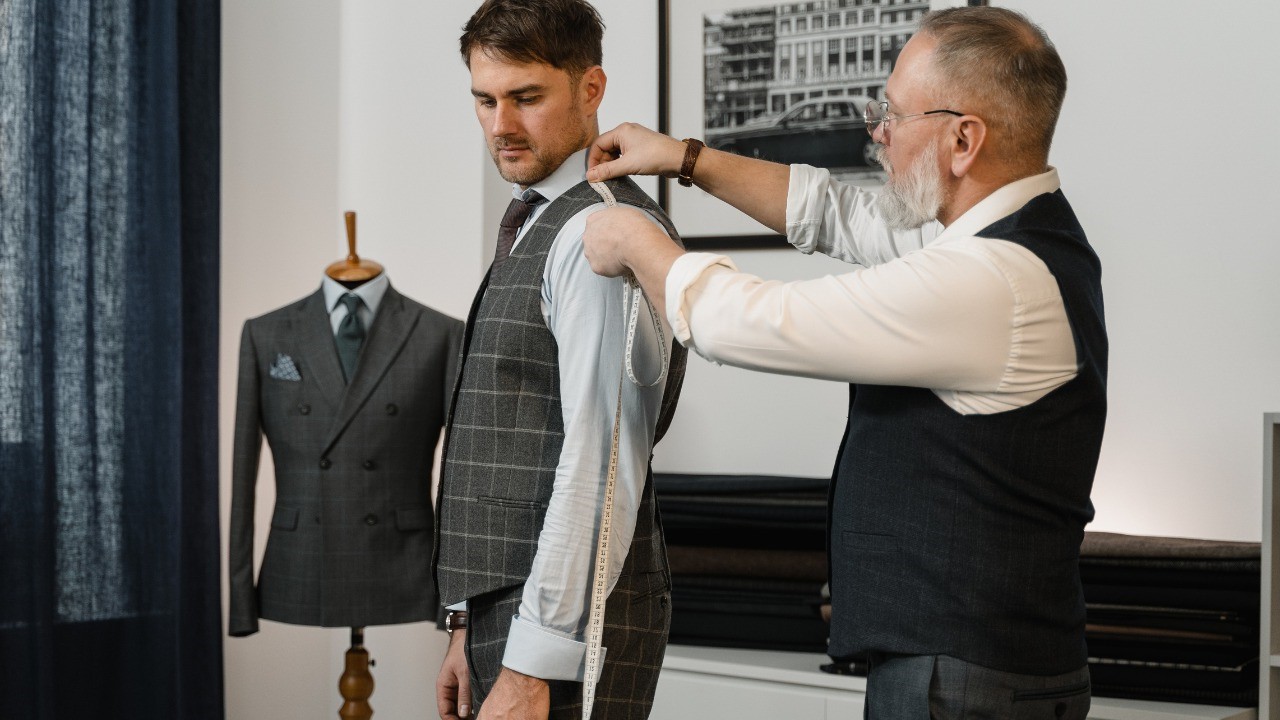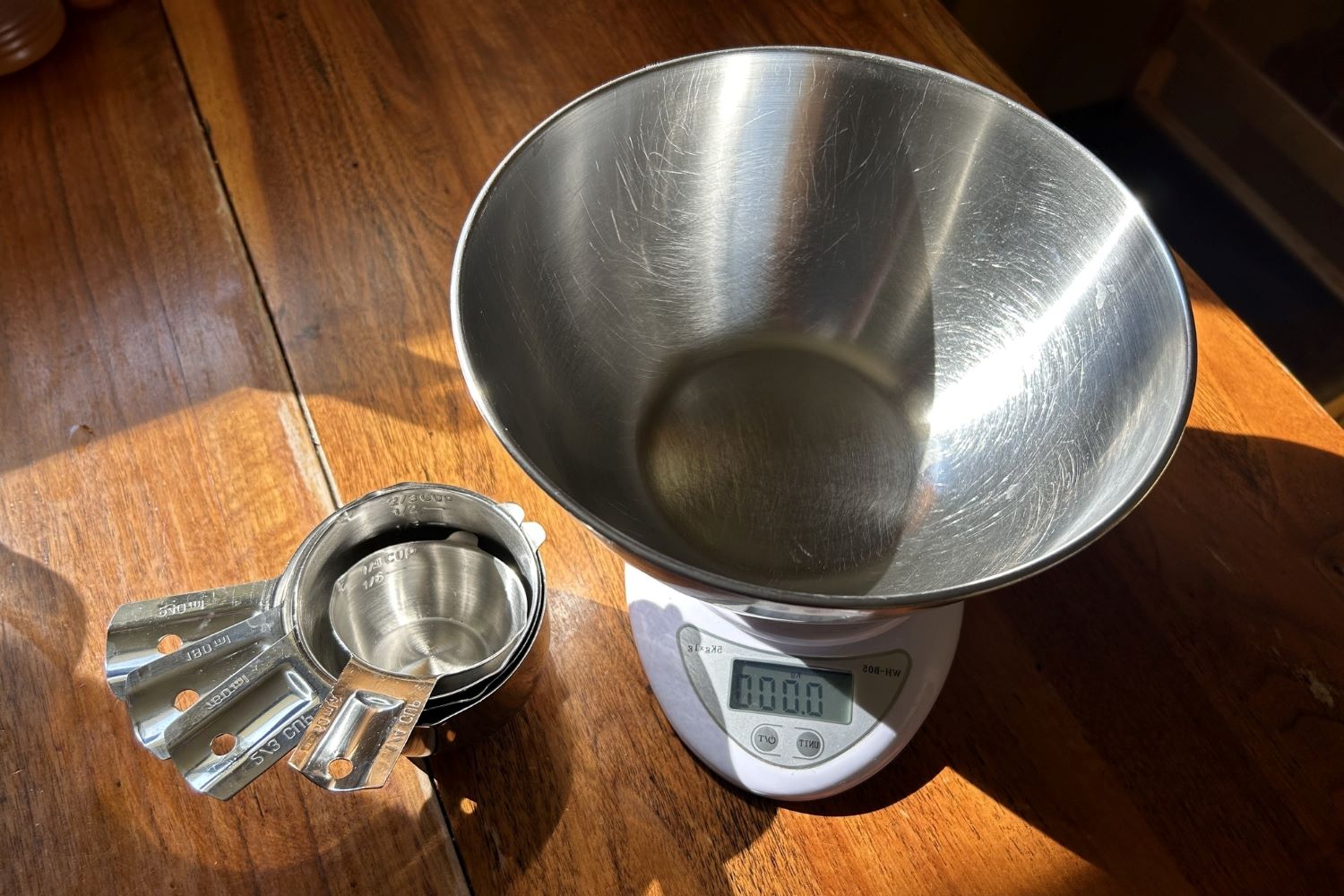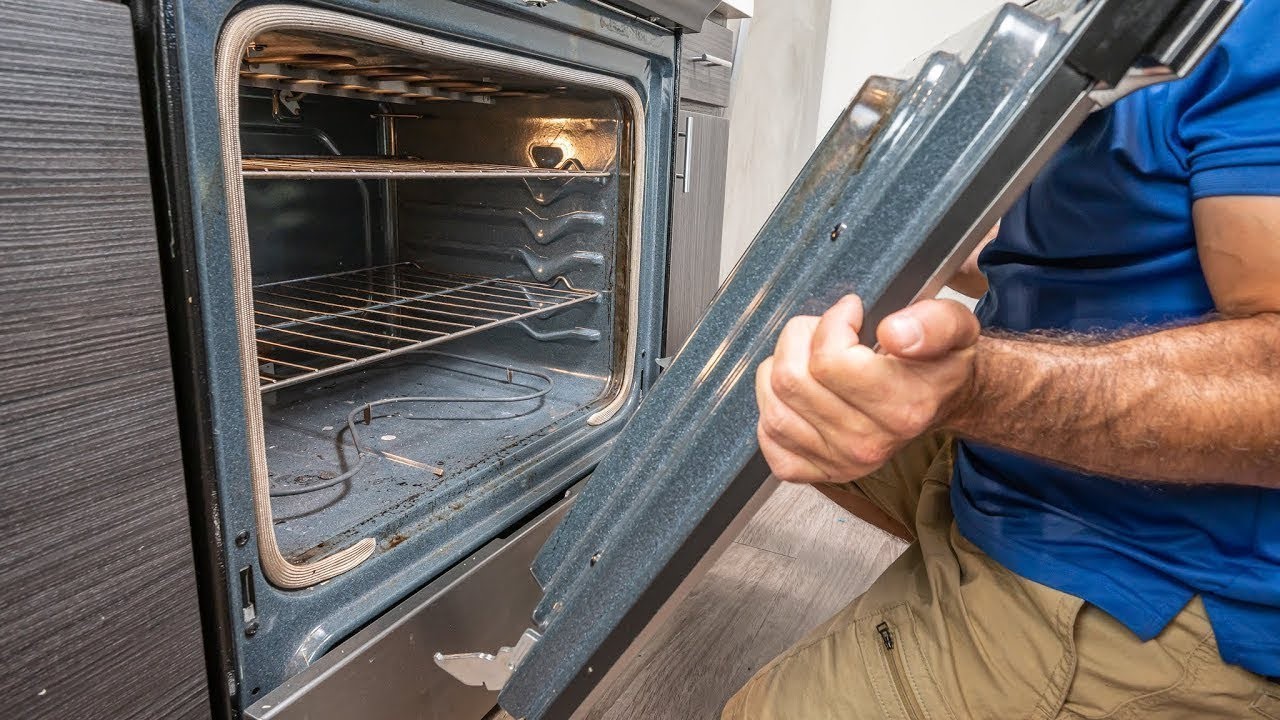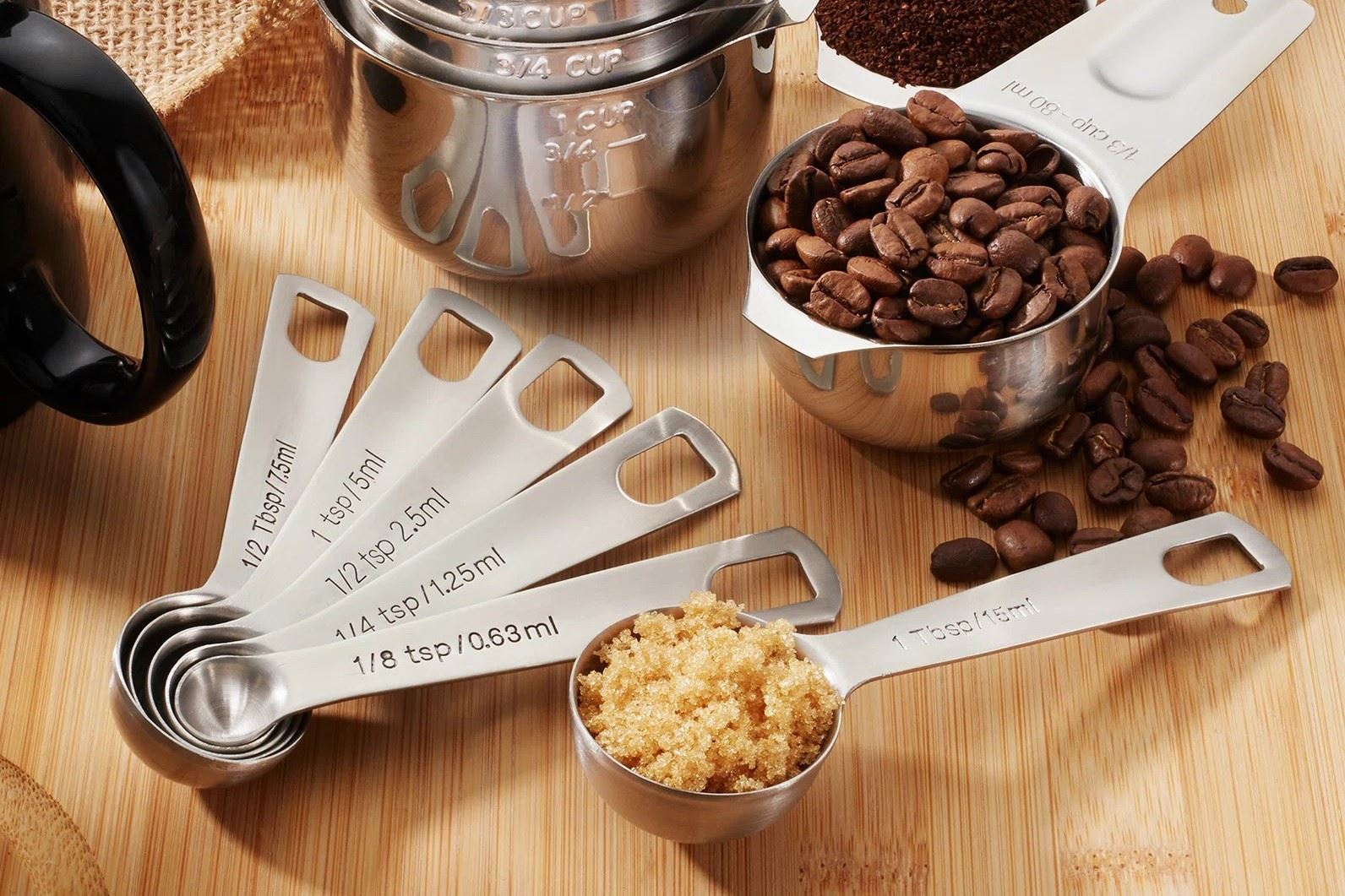

Lifestyle
How To Take Accurate Suit Measurements
Published: February 28, 2024
Learn how to take precise suit measurements for a perfect fit and elevate your lifestyle with confidence and style. Master the art of measuring for a tailored look.
(Many of the links in this article redirect to a specific reviewed product. Your purchase of these products through affiliate links helps to generate commission for Noodls.com, at no extra cost. Learn more)
Table of Contents
Introduction
Taking accurate suit measurements is crucial for achieving a perfect fit. Whether you're purchasing a new suit or getting one tailored, precise measurements ensure that the suit complements your body shape and exudes a polished, sophisticated look. Understanding the key measurements and how to take them correctly is essential for anyone seeking a well-fitted suit.
The process of taking suit measurements may seem daunting at first, but with the right tools and guidance, it can be a straightforward and rewarding experience. By mastering this skill, you gain the ability to confidently communicate your sizing requirements to tailors or when shopping for suits online. This empowers you to make informed decisions and ensures that the end result aligns with your personal style and comfort.
In the following sections, we will delve into the step-by-step process of measuring key areas such as the chest, waist, hips, sleeve length, and inseam. Additionally, we will provide valuable tips to help you achieve precision and accuracy in your measurements. By the end of this guide, you will have the knowledge and confidence to obtain suit measurements that guarantee a flattering and comfortable fit.
Let's embark on this journey to demystify the art of taking suit measurements, empowering you to make informed choices and elevate your sartorial elegance.
Read more: How To Measure A Door
Tools Needed for Taking Suit Measurements
Before embarking on the process of taking suit measurements, it's essential to gather the necessary tools to ensure accuracy and precision. The following tools are indispensable for obtaining reliable measurements:
-
Measuring Tape: A flexible and non-stretchable measuring tape is the cornerstone of obtaining accurate suit measurements. It should have clear markings in both inches and centimeters to facilitate precise readings.
-
Mirror: Having a full-length mirror is beneficial, especially when taking self-measurements. It allows you to ensure the tape is positioned correctly and provides a comprehensive view of the areas being measured.
-
Assistant: While not a physical tool, having a trusted assistant can greatly aid in obtaining precise measurements, particularly for areas that are challenging to measure accurately on your own, such as the back and shoulders.
-
Pen and Paper: Keeping a pen and paper handy is essential for recording measurements. Additionally, jotting down notes or sketches can help in visualizing the measurements and ensuring they are correctly taken.
-
Tailor's Chalk or Pins: These tools can be used to mark specific points on the garment or the body, aiding in the measurement process and ensuring consistency.
-
Properly Fitted Clothing: Wearing well-fitted clothing, such as a dress shirt, trousers, and undershirt, is crucial for obtaining accurate measurements. Ill-fitting garments can skew measurements and lead to an improper fit in the final suit.
By assembling these essential tools, you set the stage for a successful and precise measurement process. Each tool plays a crucial role in ensuring that the measurements obtained are reliable and reflective of your body's dimensions, ultimately contributing to the creation of a perfectly tailored suit that enhances your appearance and comfort.
Now that we have the necessary tools at our disposal, let's delve into the step-by-step process of measuring key areas to achieve a well-fitted suit.
How to Measure the Chest
Measuring the chest is a fundamental step in obtaining accurate suit measurements. This crucial dimension directly influences the fit and comfort of the suit jacket or shirt. To measure the chest correctly, follow these steps:
-
Preparation: Begin by standing upright in a relaxed posture, with your arms at your sides. It's essential to wear a well-fitted dress shirt or a thin layer of clothing to ensure that the measurements are not distorted by bulky garments.
-
Locate the Fullest Part of the Chest: Using the measuring tape, wrap it around the fullest part of your chest, ensuring that it rests parallel to the ground. This point is typically found at the nipple line and corresponds to the widest circumference of the chest.
-
Maintain a Comfortable Tension: While wrapping the measuring tape around the chest, ensure that it is snug but not constricting. It should maintain a comfortable tension without compressing the chest.
-
Take the Measurement: Once the tape is positioned around the fullest part of the chest, take note of the measurement in inches or centimeters. Ensure that the tape is level and not twisted, as this can lead to inaccurate readings.
-
Repeat for Accuracy: For added assurance, it's beneficial to take multiple measurements to ensure consistency. This involves wrapping the tape around the chest and recording the measurements at least two to three times to account for any discrepancies.
By following these steps, you can accurately measure your chest, providing the necessary information for tailors or retailers to recommend the most suitable suit jacket or shirt size. Additionally, these measurements serve as a valuable reference point for online purchases, enabling you to select the correct size with confidence.
Obtaining precise chest measurements is pivotal in achieving a well-fitted suit that complements your physique and exudes sophistication. With this foundational measurement secured, you are one step closer to acquiring a suit that not only fits impeccably but also enhances your overall appearance and comfort.
How to Measure the Waist
Measuring the waist accurately is a critical step in obtaining precise suit measurements. The waist measurement directly influences the fit of trousers and plays a pivotal role in ensuring comfort and a polished appearance. To measure the waist correctly, follow these steps:
-
Preparation: Begin by standing in a relaxed posture, ensuring that your abdominal muscles are not tensed. It's important to wear well-fitted trousers or thin clothing to prevent any distortion in the measurements.
-
Locate the Natural Waistline: The natural waistline is typically the narrowest part of the torso, above the belly button and below the rib cage. Use the measuring tape to locate this point, ensuring it rests parallel to the ground for an accurate measurement.
-
Maintain a Comfortable Tension: When wrapping the measuring tape around the natural waistline, ensure that it is snug but not overly tight. It should maintain a comfortable tension without compressing the waist.
-
Take the Measurement: Once the tape is positioned around the natural waistline, take note of the measurement in inches or centimeters. It's crucial to ensure that the tape is level and not twisted to obtain an accurate reading.
-
Repeat for Accuracy: To ensure precision, it's beneficial to take multiple measurements of the natural waistline. This involves wrapping the tape around the waist and recording the measurements at least two to three times to account for any discrepancies.
By following these steps, you can obtain an accurate measurement of your waist, providing essential information for tailors or retailers to recommend the most suitable trouser size. Additionally, these measurements serve as a valuable reference point for online purchases, enabling you to select the correct size with confidence.
Obtaining precise waist measurements is pivotal in achieving trousers that fit impeccably and enhance your overall appearance and comfort. With this foundational measurement secured, you are one step closer to acquiring a suit that not only fits perfectly but also exudes sophistication and elevates your sartorial elegance.
How to Measure the Hips
Measuring the hips accurately is a crucial step in obtaining precise suit measurements, especially when selecting trousers or skirts. The hip measurement plays a pivotal role in ensuring a comfortable and flattering fit, making it essential to measure this area correctly. To measure the hips accurately, follow these steps:
-
Preparation: Begin by standing in a relaxed posture, ensuring that your feet are together. It's important to wear well-fitted trousers or thin clothing to prevent any distortion in the measurements.
-
Locate the Fullest Part of the Hips: Using the measuring tape, identify the fullest part of your hips. This is typically the widest point around the buttocks. Ensure that the measuring tape rests parallel to the ground for an accurate measurement.
-
Maintain a Comfortable Tension: When wrapping the measuring tape around the fullest part of the hips, ensure that it is snug but not overly tight. It should maintain a comfortable tension without compressing the hips.
-
Take the Measurement: Once the tape is positioned around the fullest part of the hips, take note of the measurement in inches or centimeters. It's crucial to ensure that the tape is level and not twisted to obtain an accurate reading.
-
Repeat for Accuracy: To ensure precision, it's beneficial to take multiple measurements of the fullest part of the hips. This involves wrapping the tape around the hips and recording the measurements at least two to three times to account for any discrepancies.
By following these steps, you can obtain an accurate measurement of your hips, providing essential information for tailors or retailers to recommend the most suitable trouser or skirt size. Additionally, these measurements serve as a valuable reference point for online purchases, enabling you to select the correct size with confidence.
Obtaining precise hip measurements is pivotal in achieving trousers or skirts that fit impeccably and enhance your overall appearance and comfort. With this foundational measurement secured, you are one step closer to acquiring a suit that not only fits perfectly but also exudes sophistication and elevates your sartorial elegance.
Read more: How To Measure Chest Size
How to Measure the Sleeve Length
Measuring the sleeve length is a crucial step in obtaining precise suit measurements, as it directly influences the fit and comfort of the suit jacket or shirt. The sleeve length plays a pivotal role in ensuring that the sleeves are appropriately proportioned to your arms, allowing for ease of movement and a polished appearance. To measure the sleeve length accurately, follow these steps:
-
Preparation: Begin by standing in a relaxed posture, allowing your arms to hang naturally at your sides. It's essential to wear a well-fitted dress shirt or a thin layer of clothing to prevent any distortion in the measurements.
-
Locate the Shoulder Point: With the assistance of a trusted friend or using a mirror, identify the point where the shoulder meets the arm. This is typically the point where the shoulder seam of a well-fitted shirt or jacket would align with the arm.
-
Measure from the Shoulder Point to the Wrist: Using a measuring tape, start from the identified shoulder point and extend the tape along the outside of the arm, down to the wrist. Ensure that the tape follows the natural curve of the arm without pulling or slacking, as this can lead to inaccurate measurements.
-
Bend the Elbow for Confirmation: To confirm the accuracy of the sleeve length, bend your elbow at a 90-degree angle while the measurement is being taken. This ensures that the sleeves will accommodate movement without riding up excessively when the arms are bent.
-
Take Note of the Measurement: Once the tape reaches the wrist, take note of the measurement in inches or centimeters. It's crucial to ensure that the tape is straight and not twisted, as this can affect the accuracy of the sleeve length.
-
Repeat for Accuracy: To ensure precision, it's beneficial to take multiple measurements of the sleeve length. This involves measuring both arms and recording the measurements at least two to three times to account for any discrepancies.
By following these steps, you can obtain accurate measurements of the sleeve length, providing essential information for tailors or retailers to recommend the most suitable shirt or jacket size. Additionally, these measurements serve as a valuable reference point for online purchases, enabling you to select the correct size with confidence.
Obtaining precise sleeve length measurements is pivotal in achieving a well-fitted suit that not only complements your physique but also allows for unrestricted movement and comfort. With this foundational measurement secured, you are one step closer to acquiring a suit that not only fits impeccably but also exudes sophistication and elevates your sartorial elegance.
How to Measure the Inseam
Measuring the inseam is a crucial step in obtaining precise suit measurements, particularly when selecting trousers or pants. The inseam measurement directly influences the length and fit of the lower body garment, playing a pivotal role in ensuring comfort and a polished appearance. To measure the inseam accurately, follow these steps:
-
Preparation: Begin by standing in a relaxed posture, ensuring that your feet are positioned shoulder-width apart. It's essential to wear well-fitted trousers or thin clothing to prevent any distortion in the measurements.
-
Identify the Starting Point: The inseam measurement starts from the crotch, where the inner seams of the trousers meet. This point is crucial as it determines the length of the inseam and influences the overall fit of the trousers.
-
Measure Down to the Ankle: Using a measuring tape, extend it from the crotch down to the ankle, following the natural curve of the inner leg. Ensure that the tape is positioned close to the body without pulling or slacking, as this can lead to inaccurate measurements.
-
Consider the Desired Fit: Depending on personal preference and the style of the trousers, the inseam measurement can vary. For a classic fit, the inseam typically reaches the top of the shoe's heel, while a modern or tailored fit may result in a slightly shorter inseam.
-
Take Note of the Measurement: Once the tape reaches the ankle, take note of the measurement in inches or centimeters. It's crucial to ensure that the tape is straight and not twisted, as this can affect the accuracy of the inseam length.
-
Repeat for Accuracy: To ensure precision, it's beneficial to take multiple measurements of the inseam. This involves measuring both legs and recording the measurements at least two to three times to account for any discrepancies.
By following these steps, you can obtain accurate measurements of the inseam, providing essential information for tailors or retailers to recommend the most suitable trouser size. Additionally, these measurements serve as a valuable reference point for online purchases, enabling you to select the correct size with confidence.
Obtaining precise inseam measurements is pivotal in achieving trousers that fit impeccably and enhance your overall appearance and comfort. With this foundational measurement secured, you are one step closer to acquiring a suit that not only fits perfectly but also exudes sophistication and elevates your sartorial elegance.
Tips for Ensuring Accuracy
Achieving precise suit measurements is essential for ensuring a well-fitted and flattering ensemble. To guarantee accuracy in the measurement process, consider the following tips:
-
Consistency is Key: When taking measurements, ensure that the measuring tape is held consistently snug against the body without being overly tight. This uniform tension across all measurements helps maintain consistency and accuracy.
-
Double-Check and Verify: After taking initial measurements, it's beneficial to double-check each dimension to verify its accuracy. This involves re-measuring specific areas to confirm that the readings align, minimizing the margin for error.
-
Utilize Multiple Angles: When measuring certain dimensions, such as the chest or hips, consider taking measurements from multiple angles to ensure comprehensive coverage. This approach provides a more holistic understanding of the body's dimensions, contributing to accurate sizing recommendations.
-
Account for Posture and Movement: Encourage the individual being measured to stand in a relaxed and natural posture, as this reflects their typical stance and body shape. Additionally, consider taking measurements with the individual in different positions, such as standing and sitting, to accommodate potential posture-related variations.
-
Seek Professional Assistance: If possible, seek the assistance of a professional tailor or experienced individual when taking suit measurements. Their expertise can contribute to more accurate readings, especially for challenging areas such as the back and shoulders.
-
Document with Precision: When recording measurements, ensure that the values are documented with precision, including the units of measurement (inches or centimeters) and the specific points where the measurements were taken. This detailed documentation serves as a valuable reference for tailors and retailers.
-
Consider Garment Specifics: Take into account the specific style and fit preferences when measuring for different garments. For instance, a tailored fit may require slightly different measurements compared to a classic or relaxed fit, emphasizing the importance of understanding the intended style.
-
Review and Refine: After obtaining measurements, take the time to review and refine the recorded values. This process involves critically assessing the measurements for any inconsistencies or discrepancies and making necessary adjustments to ensure accuracy.
By incorporating these tips into the measurement process, individuals can enhance the accuracy of their suit measurements, ultimately leading to well-informed decisions when selecting or tailoring suits. These practices contribute to a seamless and rewarding experience, ensuring that the end result is a perfectly fitted suit that embodies sophistication and comfort.
Conclusion
In conclusion, mastering the art of taking accurate suit measurements is a valuable skill that empowers individuals to make informed decisions when selecting or tailoring suits. By understanding the step-by-step process of measuring key areas such as the chest, waist, hips, sleeve length, and inseam, individuals can ensure that their suits fit impeccably, enhancing their overall appearance and comfort.
Obtaining precise measurements is not only essential for achieving a well-fitted suit but also for expressing personal style and confidence. The measurements serve as a foundational guide for tailors and retailers, enabling them to recommend the most suitable sizes and styles. Additionally, for online purchases, having accurate measurements at hand allows individuals to confidently select the correct size, minimizing the need for returns or exchanges.
The tools and techniques outlined in this guide, including the use of a measuring tape, maintaining consistent tension, and seeking professional assistance when necessary, contribute to the accuracy of the measurement process. Furthermore, the incorporation of valuable tips such as double-checking measurements, considering posture and movement, and documenting measurements with precision, enhances the reliability of the obtained dimensions.
Ultimately, the journey of taking suit measurements is a transformative experience, providing individuals with the knowledge and confidence to communicate their sizing requirements effectively. This proficiency not only streamlines the process of acquiring well-fitted suits but also fosters a deeper appreciation for the intricacies of sartorial elegance.
By embracing the principles outlined in this guide, individuals can embark on the pursuit of perfectly tailored suits with assurance and enthusiasm. The culmination of precise measurements, thoughtful consideration of fit preferences, and an understanding of individual style culminates in the acquisition of suits that not only fit flawlessly but also reflect the unique personality and elegance of the wearer.
In essence, the journey of taking suit measurements transcends the technical aspects, evolving into a celebration of individuality and self-expression. It is a testament to the transformative power of a well-fitted suit, elevating confidence, sophistication, and personal style. With the knowledge and insights gained from this guide, individuals are poised to embark on a sartorial journey marked by impeccable fits, timeless elegance, and unwavering confidence.














